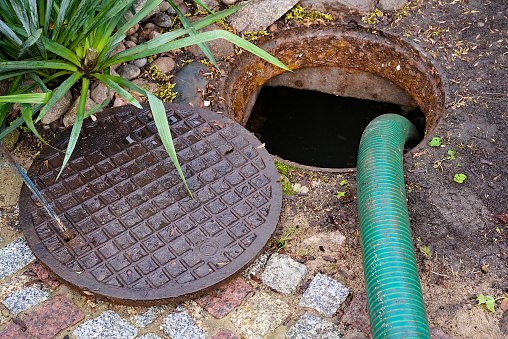Running a commercial restaurant is hard work. With so many things to juggle—like delivering great service and managing your team—it’s easy to overlook less glamorous tasks, such as maintaining your grease trap. Grease traps are often forgotten until they cause a problem. Most people don’t think about them until they fail, but they’re crucial for keeping your kitchen running smoothly.
Just like everything else around your kitchen, your grease trap needs regular maintenance to stay in good shape.
So, the burning question many have is, “How often should you clean your grease trap?” Fortunately, we’ve got the answers. Below, we’ll break down what you need to know about grease traps and their cleaning schedules. Keep reading to learn more!
What is a Grease trap?
A grease trap, also known as a grease recovery device or grease interceptor, is an essential component in commercial kitchens and restaurants. Grease traps capture and separate fats, oils, and grease (FOG) from wastewater before it enters the plumbing system, preventing drain blockages, foul odors, and potential pest infestations.
Designed specifically for kitchen wastewater, grease traps should only handle waste from sources like toilets. They are commonly found in restaurants, bakeries, cafes, schools, bars, and other establishments dealing with heavy FOG drainage, as well as in some residential properties. These facilities are often required by law to install grease traps to prevent issues in the city’s sewer infrastructure caused by excessive grease in the drainage system.
Grease traps are made from materials such as stainless steel, concrete, mild steel, or plastic and vary in capacity, ranging from 40 liters to over 45,000 liters. They can be installed above ground, underground, inside the kitchen, or outside the building.
How Often Should You Clean Your Grease Trap?
It is generally recommended to clean your grease trap every 1 to 3 months. However, the frequency of cleaning can depend on factors like the size of the grease trap and the amount of grease disposed of daily.
When grease accumulates in the trap, it not only reduces its capacity but can also lead to costly damage and fines, which can vary by location. One good rule of thumb is the “quarter rule”: when your grease trap reaches about 25% of its capacity with fats, oils, and grease (FOG), it becomes less effective at removing grease from wastewater.
In addition to the capacity rule, there are other signs that indicate it’s time for a cleaning. Unpleasant odors coming from the drains, an increase in pests, and slow drainage can all indicate that your grease trap needs cleaning. Grease backups can also cause grease to appear in unexpected places, indicating a need for cleaning.
What are the Benefits of Regular Grease Trap Cleaning?
1. Prevents clogging and blockage
Regular cleaning of grease traps helps prevent clogs and backups. When too much fat, oil, and grease (FOG) builds up, it can block the trap and cause slow drainage or backups.
By sticking to a regular cleaning schedule, you can ensure that your grease trap remains clear, reducing the risk of costly emergency repairs and disruptions to your business. This not only saves you money but also helps keep your operations running smoothly.
2. Maintain Kitchen Hygiene
When a grease trap is full, oil can leak out, contaminating clothing, floors, and even food. This can result in unpleasant odors and allow germs to proliferate, posing health risks to both employees and customers. It is crucial to regularly clean and maintain your grease trap to avoid these issues and maintain a healthier kitchen environment.
Moreover, keeping your grease trap clean helps prevent potential legal problems related to health and safety.
3. Saves cost
One important reason to regularly clean your grease trap is to prevent future issues with your kitchen and sewer system. It’s much cheaper to maintain grease traps than to deal with the expensive problems that neglect can cause.
Regular maintenance helps you avoid costly repairs and potential business shutdowns. Additionally, many cities and counties require food businesses to keep grease traps clean, with fines for failing to comply.
An overflowing grease trap can also lead to problems for neighboring homes and businesses, increasing your expenses and potentially causing legal trouble.
4. Better for the environments
Cleaning your grease trap is important for protecting the environment. When grease traps overflow, they become less effective and can allow grease to escape into waterways or drainage fields. This not only harms the environment but also poses serious health risks.
5. Extending the Life of Your Grease Trap
A well-maintained and clean grease trap can significantly extend its lifespan. By being proactive, you can avoid the cost and inconvenience of early replacements and ensure that your grease trap remains effective for years to come.
Conclusion
It is important to regularly maintain your grease trap to keep it clean and efficient. The frequency of cleaning may vary depending on your specific business needs, but staying on top of this task is essential. Proper maintenance ensures that your kitchen remains a safe, functional, and compliant space. By investing time and effort into regular upkeep, you can minimize disruptions and potential fines, allowing you to focus on effectively running your business and serving your customers well.
For expert guidance on grease trap maintenance and septic system care, visit VI REEL. Our professionals can help you ensure the well-being of your systems and contribute to their lasting functionality.


